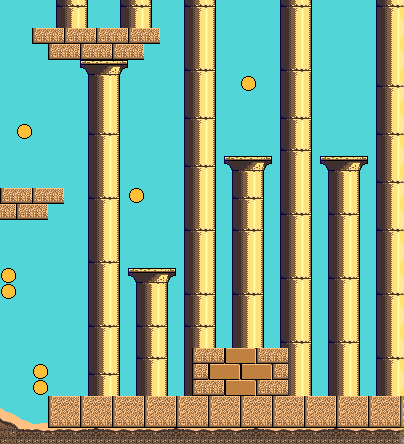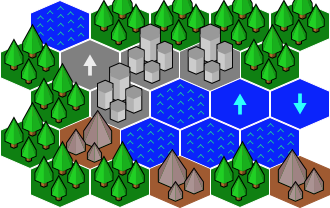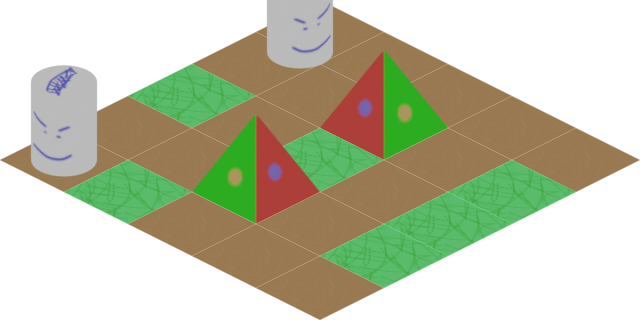flame_tiled¶
flame_tiled is the bridge package that connects the flame game engine to Tiled maps by parsing TMX (XML) files and accessing the tiles, objects, and everything in there.
To use this,
Create your own map by using Tiled.
Create a
TiledComponentand add it to the component tree as follows:
final component = await TiledComponent.load(
'my_map.tmx',
Vector2.all(32),
);
add(component);
TiledComponent¶
Tiled is a free and open source, full-featured level and map editor for your platformer or
RPG game. Currently we have an “in progress” implementation of a Tiled component. This API
uses the lib tiled.dart to parse map files and
render visible layers using the performant SpriteBatch for each layer.
Supported map types include: Orthogonal, Isometric, Hexagonal, and Staggered.
Orthogonal |
Hexagonal |
Isomorphic |
|---|---|---|
|
|
|
An example of how to use the API can be found here.
TileStack¶
Once a TiledComponent is loaded, you can select any column of (x,y) tiles in a tileStack to
then add animation. Removing the stack will not remove the tiles from the map.
Note: This currently only supports position based effects.
void onLoad() {
final stack = map.tileMap.tileStack(4, 0, named: {'floor_under'});
stack.add(
SequenceEffect(
[
MoveEffect.by(
Vector2(5, 0),
NoiseEffectController(duration: 1, frequency: 20),
),
MoveEffect.by(Vector2.zero(), LinearEffectController(2)),
],
repeatCount: 3,
)
..onComplete = () => stack.removeFromParent(),
);
map.add(stack);
}
TileAtlas¶
When a tilemap has multiple images (from multiple tilesets) TiledComponent uses a TileAtlas to
pack all those image into a single big image (a.k.a atlas). This helps in rendering the whole map in
a single draw call. But is there a limit on how big this atlas can be based on the target platform
and hardware. As it is not possible to query this max size from Flame or Flutter as of now,
TiledComponent limits the atlas to 4096x4096 for web and 8192x8192 for all other platforms.
These limits should work well for most cases. But in case you are sure that your target platform can
support bigger atlas and want to override the limits used by TiledComponent you can do so by
passing in the atlasMaxX and atlasMaxX values to TiledComponent.load.
NOTE: This is not recommended as such huge sizes might not work with all hardware. Instead consider resizing the original tileset images so that when packed they fit with the limits.
final component = await TiledComponent.load(
'my_map.tmx',
Vector2.all(32),
atlasMaxX: 9216,
atlasMaxY: 9216,
);
add(component);
Limitations¶
Flip¶
Tiled has a feature that allows you to flip a tile horizontally or vertically, or even rotate it.
flame_tiled supports this but if you are using a large texture and have flipped tiles there will
be a drop in performance. If you want to ignore any flips in your tilemap you can set the
ignoreFlip to false in the constructor.
Note: A large texture in this context means one with multiple tilesets (or a huge tileset) where the sum of their dimensions are in the thousands.
final component = await TiledComponent.load(
'my_map.tmx',
Vector2.all(32),
ignoreFlip: true,
);
Clearing images cache¶
If you have called Flame.images.clearCache() you also need to call TiledAtlas.clearCache() to
remove disposed images from the tiled cache. It might be useful if your next game map have completely
different tiles than the previous.
Troubleshooting¶
My game shows “lines” and artifacts between the map tiles¶
This is caused by the imprecision found in float-pointing numbers in computer science.
Check this Article to learn more about the issue and how it can be solved.



